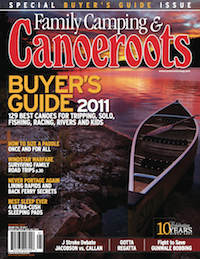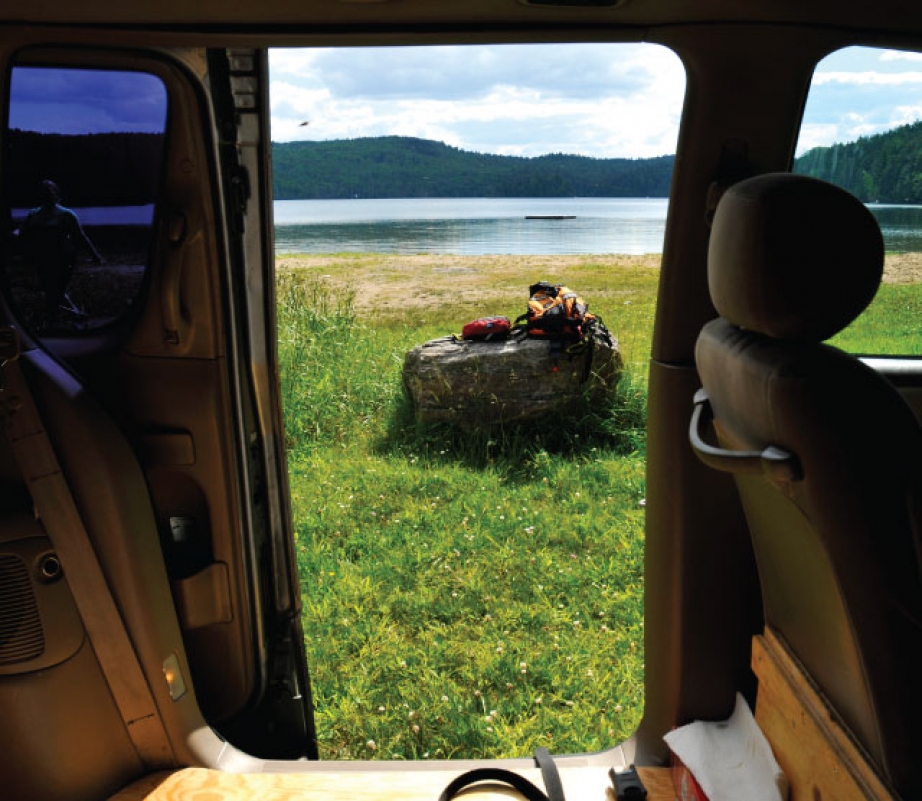Road tripping is a state of mind. Just ask Jack Kerouac. Don’t let an unwieldy and rebellious payload of kids, gear, boats and pets dampen your spirit. Even though road trips frequently require as many hours in the car as you’ll spend at the destination, highway miles provide an excellent opportunity to share some memorable time together. Enjoy the journey with these stress-saving strategies.
Navigation
North America’s classic road trip routes boast some serious mileage. The famous Route 66 stretches for 2,451 miles from Chicago to Los Angeles and the TransCanada Highway connects the Pacific and Atlantic coasts over 8,030 kilometers of roadways.
Reviewing online directions and road maps before you head out is a no-brainer. Folks that are familiar with your destination can also provide valuable info on the condition and location of elusive back roads and shuttle routes—details even a good map can’t provide.
En route, a GPS makes life easier. There is road map software available for many handhelds out there that allows your device to do double-duty, helping you navigate both the front and backcountry.
Teach your kids how to read a map and give them their own copy with your driving route and trip highlights marked. This is a great way to learn map-reading skills and will help minimize backseat boredom.
Pit Stops
Modern rest stops offer a wide variety of amenities but are seriously lacking in culture. Stopping away from the fast food and concrete of commercial pull-offs lets road trippers enjoy the local way of life.
Despite bypasses on modern interstates and major highways, the fun roadside attractions from the heydays of Route 66 are still out there.
Why not stop at the massive mosquito in Komarno, MB, the life-sized Jolly Green Giant in Blue Earth, MN, or the world’s largest buffalo in Jametown, ND? Drivers can take a deserved break and kids can burn off energy, making the next leg of the journey safer and more comfortable for everyone.
Letting children take charge of an inexpensive digital camera allows them to join in the fun of recording your family experience on the road and at roadside stops.
Hazelmail.com offers a wonderful service that turns your photos into postcards, then prints, stamps and mails them for you. Find a place to stop with wireless Internet connection—plan ahead with listings at Wififreespot. com—and you can easily send a custom postcard from the road.
Tummy Check
Nothing kills the road trip spirit like motion sickness. Passengers prone to car sickness should avoid reading the latest issue of their favorite canoeing magazine—or anything for that matter—while on the road…save it for the campsite.
Focusing on a point in the distance outside of the vehicle helps the brain settle the stomach—a good reason to leave video games and portable DVD players at home. Rotating passengers to make it easier to see out the front windshield also aids in alleviating motion sickness. Who doesn’t love riding shotgun?
Pack ginger snaps, peppermints and saltines—all are proven to help with upset stomachs. And remember, while it may slow you down, it’s in everyone’s best interest to stop the care before you hear these for words: “Mom, I’m gonna barf.”
Hauling Your Stuff
Did you know that it’s illegal to tie a dog to the roof of your car in Alaska? Or that Massachusetts law states that you’ll get pulled over if you have a gorilla in your backseat? With these exceptions, it’s easy to ensure a safe, secure and legal load.
Don’t cheap out—a good roof rack is worth its weight in gold. Getting an aerodynamic, durable system makes hauling canoes and gear safer and easier. Many quality systems outlive today’s cars and can be adapted to different vehicles when it’s time for a switch.
Most aftermarket roof rack manufacturers offer lock systems that allow you to secure your gear to your rack and your rack to your car for peace of mind while you’re feasting at Bonanza. A long, steel cable bike lock also works for many applications.
Rooftop bag systems are a versatile, affffordable and easier to store alternative to pricey hard-shell rooftop boxes. Bag systems that attach to the rear od many vehicles free up roof space for bikes or boats.
Entertainment
The first commercially successful car radio rocked dashboards in 1929. Onboard sing-a-longs to Queen’s Bohemian Rhapsody can be traced back to 1975. Since these milestones, most family auto excursions have been made with musics.
The best way to share the time with your passengers rather than losing them to their headphones is to listen to something together. Before you depart, gather an equal selection of every family member’s music and make one big playlist or multiple CD mixes. On the road, set the player on random. Hey, at least it’s shared suffering.
Local radio can give road trippers a taste of the region they’re vis- iting as well as local weather and road condition updates.
If trying to agree on music threatens Windstar warfare, listen to an audio book. It’s amazing how quickly a good story passes the time on a long trip. Thousands of titles are now available online.
Podcasts are another option. Download Road Trip USA, NPR’s This American Life or CBC Radio’s Vinyl Café for family oriented, road worthy entertainment.

This article first appeared in the Spring 2011 issue of Canoeroots Magazine.




